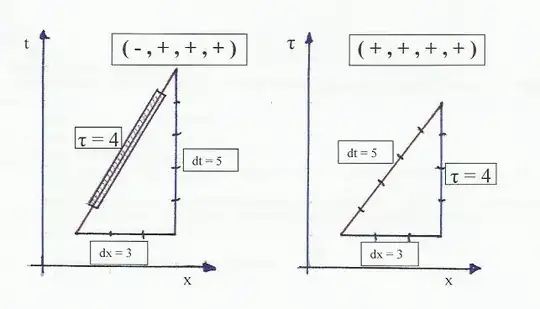In history there was an attempt to reach (+, +, +, +) by replacing "ct" with "ict", still employed today in form of the "Wick rotation". Wick rotation supposes that time is imaginary. I wonder if there is another way without need to have recourse to imaginary numbers.
Minkowski spacetime is based on the signature (-, +, +, +). In a Minkowski diagram we get the equation: $$ \delta t^2 - \delta x^2 = \tau^2 $$ Tau being the invariant spacetime interval or the proper time.
By replacing time with proper time on the y-axis of the Minkowski diagram, the equation would be $$ \delta x^2 + \tau^2 = \delta t^2$$ In my new diagram this equation would describe a right-angled triangle, and the signature of (proper time, space, space, space) would be (+, +, +, +).

I am aware of the fact that the signature (-, +, +, +) is necessary for the majority of physical calculations and applications (especially Lorentz transforms), and thus the (+, +, +, +) signature would absolutely not be practicable.( Edit: In contrast to some authors on the website about Euclidian spacetime mentioned in alemi’s comment below)
But I wonder if there are some few physical calculations/ applications where this signature is useful in physics (especially when studying the nature of time and of proper time).
Edit (drawing added): Both diagrams (time/space and proper time/space) are observer's views, even if, as it has been pointed out by John Rennie, dt is frame dependent and τ is not.